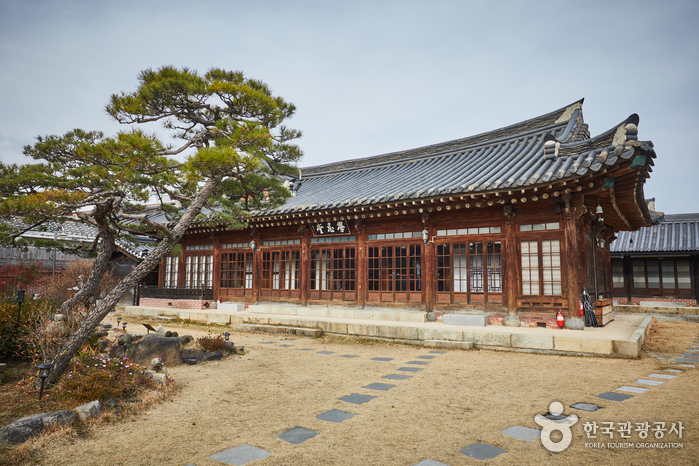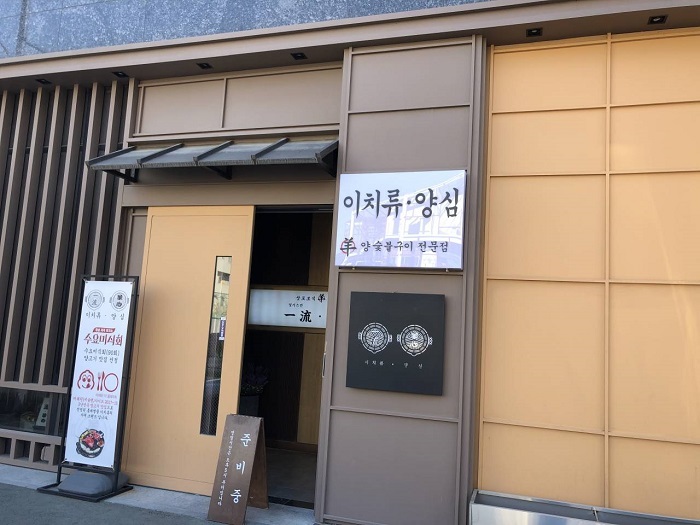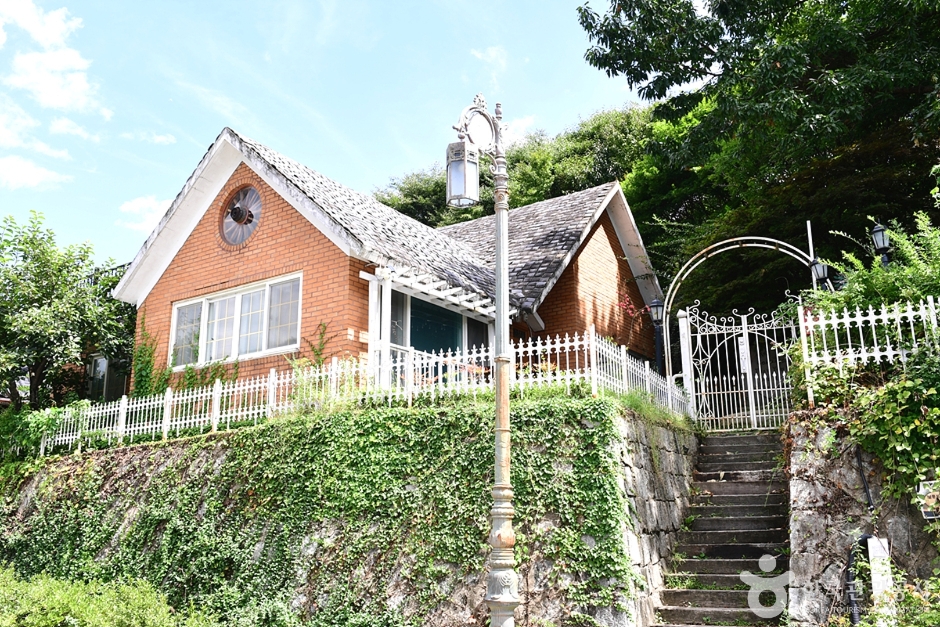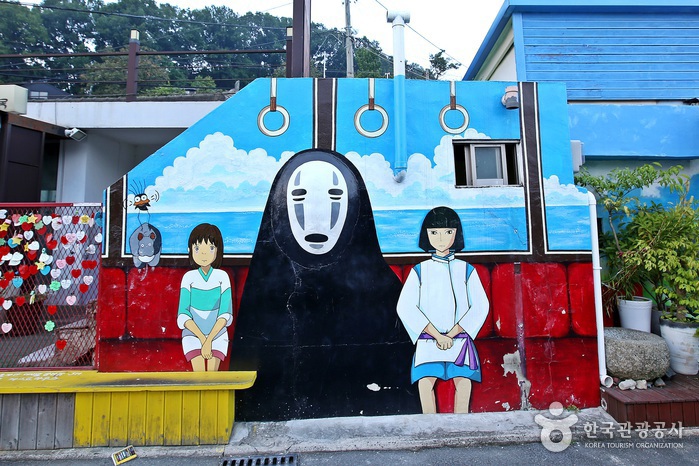Lime Hotel (라임호텔)
3.6Km 2025-07-10
13-3, Ajung 4-gil, Deokjin-gu, Jeonju-si, Jeonbuk-do
Lime Hotel is located in the vicinity of Eastern Jeonju IC, about 700 meters from the popular Ajung Lake Park. Modern, sophisticated interiors, and clean facilities are the hotel’s best features. Guest rooms include deluxe, premium, premium twin, lovely suite, modern suite, and body friend suite. All rooms have latex beds and 2 PCs, and they are cozy with birch interiors and gentle indirect lighting.
The lovely suite room features the elements of a hanok while the body friend suite room melts away the fatigue of travel with the finest massage chair and whirlpool bath. Breakfast is served from 7:00 am and breakfast room service is also available upon request.
It takes about 10 minutes to reach Jeonju Hanok Village, where Gyeonggijeon, and Jeondong Cathedral are located. Moreover, there are many other attractions such as Jeonju Zoo, Deokjin Park, Jeonju Hanji Museum, Jeonju National Museum, and Jeonbook Provincial Art Museum. While traveling to Jeonju, try various foods such as Jeonju bibimbap, bean sprout soup rice, rice wine, gamaek, makgeolli, and handmade beer. The southern market night market, filled with delicacies, is a very popular place these days. It is held every Friday and Saturday evening.
Yangsajae [Korea Quality] / 문화공간 양사재 [한국관광 품질인증]
3.6Km 2024-10-15
40, Omokdae-gil, Wansan-gu, Jeonju-si, Jeonbuk-do
+82-63-282-4959
Located in Jeonju Hanok Village, Yangsajae was the place where the poet Lee Byeong-gi (pen-name: Garam, sijo poet) composed his sijo (a Korean traditional poetic form) works. Now used as a cultural space, the house attracts many people looking for relaxation and cultural experiences.
Yangsajae, meaning “a house (jae) that cultivates (yang) classical scholars (sa)”, was an annex of the Jeonjuhyanggyo Confucian School where classical scholars used to study in preparation for the national civil service examinations. As an educational and creative place, Lee Byeong-gi composed sijo poems there for six years from 1951. It later served as the Jeonbuk Public Elementary School with the introduction of new learning to the Jeollabuk-do area in 1987. Since 2002, however, it has served as a hanok stay dedicated to promoting local history and traditions to the public. It is said that the building was constructed on a 400-year-old site about 150 years ago. In 1980, repair work was conducted to save the basic structure of the house.
The house is a typical ‘ㄱ’-shaped hanok structure with a half-hipped roof. In particular, the three dormitory rooms originally used by Confucian students and classical scholars can be converted into one single room for seminars, tea ceremonies, or other group meetings simply by opening the bunhapmun (sliding doors).
The guesthouse is a ‘ㅡ’-shaped hanok built in 1980. Each room has a clean and cozy interior with simple decoration and furniture. The rooms include the Gudeul (floor heated with firewood) Room, where the tea ceremony program using green tea leaves picked from the wild green tea field behind the house is held, and the Ondol (Korean floor heating system) Room.
As the poet Lee, who loved orchids, poems and alcohol, lived at Yangsajae, there are still traces of his former presence inside the house. Notably, Lee used the ‘Garamdasil’ room as his study room, so it displays some of his photos.
There is a postbox situated in a corner of the yard which the guests can use, and the owner will deliver the mail himself. Yangsajae is not only a hanok accommodation but also a multi-experience space where guests can discover traces of the old educational institute and the poet Lee’s life and works.
Hakindang (학인당)
3.6Km 2025-07-18
45, Hyanggyo-gil, Wansan-gu, Jeonju-si, Jeonbuk-do
Goyu [Korea Quality] (고유 [한국관광 품질인증])
3.6Km 2025-07-14
51-5, Hyanggyo-gil, Wansan-gu, Jeonju-si, Jeonbuk-do
Ichiryu Yangsim (이치류양심)
3.6Km 2024-10-16
22, Hongsanbuk-ro, Wansan-gu, Jeonju-si, Jeonbuk-do
+82-63-228-8880
A place where you can enjoy various lamb dishes. The best menu at this restaurant is lamb chop. This Chinese (cuisine) restaurant is located in Jeonju-si, Jeonbuk-do.
2521 (이오이일)
3.6Km 2025-07-17
5-19, Omokdae-gil, Wansan-gu, Jeonju-si, Jeonbuk-do
Hanokstory [Korea Quality] / 한옥이야기 [한국관광 품질인증]
3.6Km 2025-01-02
83-14, Eunhaeng-ro, Wansan-gu, Jeonju-si, Jeonbuk-do
+82-10-9203-1111, +82-10-4166-7799
Hanok Story in Hyanggyo-gil in Jeonju Hanok Village is a traditional Korean house built over 60 years ago and was recently renovated to serve as a guesthouse. Thus, it boasts of modern convenient facilities but preserves most of the features of a traditional Korean house, which was home to the guesthouse owner and his wife for over 35 years. The couple put old books, LPs, old movie posters, Korean lunch boxes, and old television on display in every corner of the house to create an old look and finish. In the yard is a 50-year-old persimmon tree that provides cool shade during the summer and delicious persimmons in the fall. All the old items in the house have a story to tell, and that's why the owner named his guesthouse "Hanok Story."
At the entrance of the house is a Korean phrase meaning “Enjoy the Five Blessings (longevity, wealth, health, love of virtue, and peaceful death) generation after generation with the energy of the sun, moon, and stars.” That’s why the rooms are named “Geumbit (Golden Light),” “Haetbit (Sunlight),” “Dalbit (Moonlight),” and “Byeolbit (Starlight).” The phrase is also engraved on top of the door to the "Haetbit Room." There are a total of seven guestrooms -- four in the main building and the "Solbit Room," "Deluxe Room No. 1," and "Deluxe Room No. 2." All the rooms are furnished with bathroom, TV, and air conditioner. Deluxe Room No. 2 has a kitchen for the guests to cook. There is a garden of sowbread, balloon vine, and hydrangea in the yard.
There is also a cafeteria made of cypress wood in the yard. The walls are covered with post-its left by the guests as well as musical instruments and dolls. It's where tea and breakfast are served. Homemade Korean breakfast is served for free. A tea class is also available during the weekend upon reservation.
Hanokhyeyum[Korea Quality] / 한옥혜윰[한국관광 품질인증/Korea Quality]
3.6Km 2024-04-07
42-5, Hyanggyo-gil, Wansan-gu, Jeonju-si, Jeonbuk-do
+82-10-5512-1226
Located in Jeonju Hanok Village, Hanok Hyeyum offers a traditional “hanok” (traditional Korean house) experience to its guests. The Korean term “hyeyum” means “thought,” and the hostel’s name pertains to the owners’ wishes of providing new feelings and thoughts to visitors. Its design faithfully brings the feel of the grain on the timber, which was possible with the participation of Daemokjang and Somokjang artisans specializing in hanok construction. The hanging sign at the entrance is carved by a Mokjogakjang, an artisan carpenter and holder of Intangible Cultural Property, and the same spirit of dedication and passion can be found throughout the building. There are six rooms in total, all Korean-style with exposed rafters, handwritten calligraphy, dainty furniture, and masterful teacups. Guests can also find a surprise welcome package of face mask packs. All rooms have modern and sleek bathrooms, while some rooms come with small attic spaces. Hanok Hyeyum also offers pickup services to solo female travelers from the Jeonju Bus Terminal or Jeonju Station, and a complimentary breakfast with a seasonal menu, including items like rice cakes, egg, sweet potato, fruits, and coffee.
Galería de Murales de la Aldea Jaman (자만마을 벽화갤러리)
3.6Km 2025-07-10
Gyo-dong, Wansan-gu, Jeonju-si, Jeonbuk-do
Hanok Garden in Jeonju/ 전주한옥마당
3.7Km 2025-03-05
80-13, Jeonjucheondong-ro, Wansan-gu, Jeonju-si, Jeonbuk-do
+82-10-9494-4579
Jeonju Hanok Madang is located in the Jeonju Hanok Village. Jeonjucheon Stream and Namcheongyo Bridge are only one block away, whereas Gangam Calligraphy Museum, Jeonjuhyangyo Confucian School, Jeonju Hanbyuk Culture Center, Nambu Market, and Markbu Market Youth Mall are nearby. Major attractions of the Jeonju Hanok Village such as Gyeonggijeon, Jeondong Catholic Cathdral, and Omokdae are also within walking distance.
The main building and servants’ quarters of Jeonju Hanok Madang were built in 1941. It was renovated to retain the original shape of the traditional hanok, yet cozy and comfortable enough for modern people to use. Porches are attached to every room while Faith Room and Hope Room have additional inner floors attached to it. Inside the rooms are rafters, beams, wooden pillars walled with Hanji wallpapers, and ribs of lattice doors. There is a clean bathroom in each room.
The yard is the place the owner couple cherishes the most. Guests can enjoy the yard in any room just by opening the door. It is a combination of jar stands, a small pine tree, and small potted plants. Different flowers bloom from spring through autumn. It is such a pleasure to sit on the porch and appreciate the scene. In autumn, the persimmon tree bears fruits and dried persimmons hang from the eaves.
![Yangsajae [Korea Quality] / 문화공간 양사재 [한국관광 품질인증]](http://tong.visitkorea.or.kr/cms/resource/75/1879875_image2_1.jpg)

![Goyu [Korea Quality] (고유 [한국관광 품질인증])](http://tong.visitkorea.or.kr/cms/resource/97/2651897_image2_1.jpg)


![Hanokstory [Korea Quality] / 한옥이야기 [한국관광 품질인증]](http://tong.visitkorea.or.kr/cms/resource/20/2046320_image2_1.jpg)


 Español
Español
 한국어
한국어 English
English 日本語
日本語 中文(简体)
中文(简体) Deutsch
Deutsch Français
Français Русский
Русский